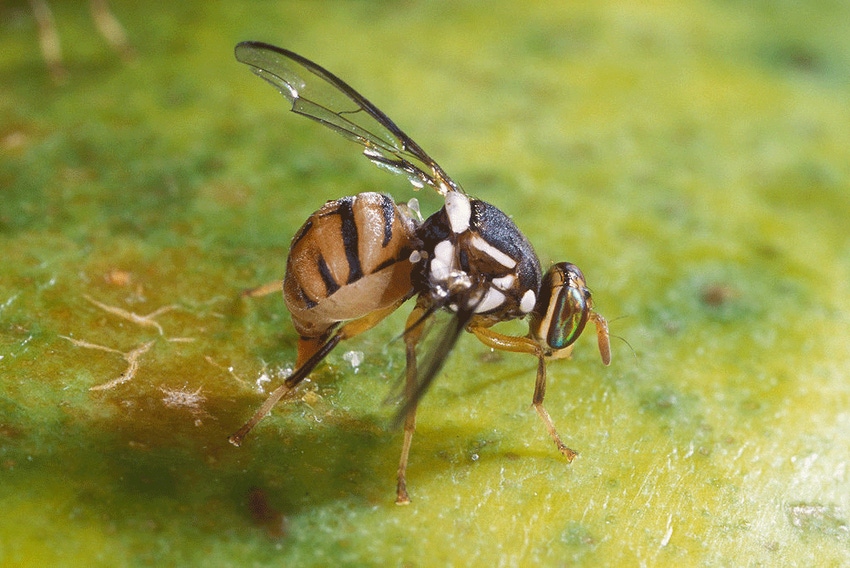February 20, 2016

The lifting of an agricultural quarantine in Miami-Dade County Feb. 13 signaled victory over the invasive Oriental fruit fly and a return to business as usual for growers within a 99-square-mile area that includes vegetable farms, nurseries, packing houses, residential neighborhoods and much of the state’s commercial tropical fruit acreage.
The fruit fly, known scientifically as Bactrocera dorsalis, is known to feed on more than 400 crops, including scores grown in Florida, Payne said. Once established, the insect may cause 25 to 50 percent losses in food-crop harvests. In August 2015, specimens began to appear in south Miami-Dade County fruit fly monitoring traps, prompting FDACS to impose a temporary quarantine on 99 square miles that include an agriculture-dependent area known as The Redland. Altogether, the county’s agricultural activities generate $1.6 billion in revenues each year.
Officials with the University of Florida Institute of Food and Agricultural Sciences credit the success story to determination and teamwork by a partnership of growers, landscapers, homeowners, government officials and agency personnel, and UF/IFAS Extension faculty.
The quarantine, which took effect Sept. 2, 2015, temporarily halted sales, transportation and shipment of produce from the quarantined area, but included provisions that enabled most growers to resume these activities by executing and following a compliance agreement with FDACS.
“Our personnel played a vital role in bringing the quarantine to a quick ending, by facilitating clear communication between producers and agency personnel,” said Jack Payne, UF senior vice president for agriculture and natural resources. “The good guys won, and we’re proud that we helped make it happen.”
Numerous UF/IFAS Extension faculty took part in a statewide effort known as the Oriental Fruit Fly Eradication Program, or OFF Program, he said. Funded and overseen by the Florida Department of Agriculture and Consumer Services (FDACS), the OFF Program also included representatives of the FDACS Division of Plant Industry, the U.S. Department of Agriculture Animal and Plant Health Inspection -- Plant Protection Quarantine, the Miami-Dade County Agricultural Manager’s office, Miami-Dade County officials and growers’ organizations.
“This fruit fly species has been detected in Florida going back to 1964, but it’s never become permanently established, and that’s because of coordinated responses like this one,” Payne said. “I applaud the FDACS leadership and I credit their fruit fly monitoring network for uncovering this threat in such a timely manner. I also want to acknowledge the losses that individual growers suffered.”
Officials stepped up efforts to eradicate the fruit fly, by applying insecticides and increasing the number of monitoring traps in infested areas. October 10 marked the last day an Oriental fruit fly was trapped in Miami-Dade County, and from then on, officials grew hopeful as the number of fly-free days increased. Eradication measures and intensive monitoring continued full-bore as OFF Program partners waited until enough time had passed for the pest to complete three life cycles, a figure that entomologists calculated and recalculated based on changing weather conditions.
During the 125-day wait, Extension personnel continued to attend meetings, organize and host workshops, circulate new information, discuss the danger the insect posed and educate growers about how they could comply with eradication regulations, Place said.
“We were facing one of the most damaging pests of food crops worldwide,” Place said. “In a situation like that, you can’t let up. I know that our people made an all-out effort to answer every question and eliminate every possibility of confusion.”
You May Also Like




